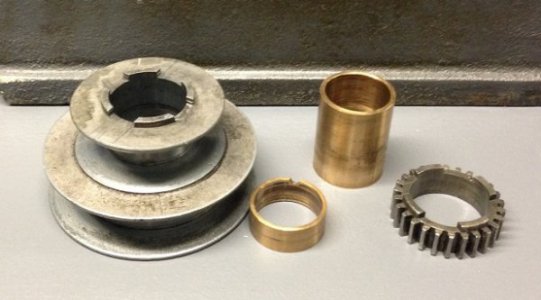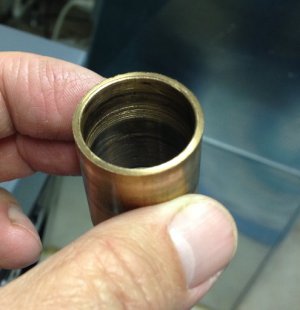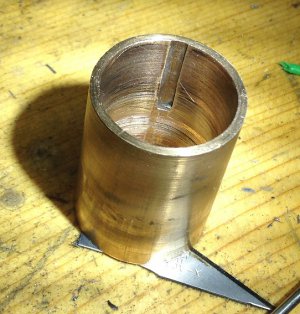- Joined
- Mar 22, 2014
- Messages
- 870
I was really happy with how my mill is running. I have spent about a year working on it and thought I finally had all the bugs out. Then, while running it with the back gear engaged, the motor belt started to slip. So I tightened the belt and continued working on my project. A few minutes later one of the pulleys on the counter shaft started to slip. I was mildly annoyed and started to tighten it when I thought.... wait a minute.... whats going on here...
The bull gear and pulley/gear assembly were locked together even though the pin was disengaged. They had seized to the spindle shaft. I was able to drive out the spindle with a mallet and some wood.
The bushing (Oillite?) looks terrible. It is scored in many places and has an area where the surface is very rough. The spindle shaft has a corresponding rough area but I think I can polish it out. Is the bushing a standard size? Can I simply press it out, purchase a new one and press it in? Has anyone been through this before on an Atlas mill?
The bull gear and pulley/gear assembly were locked together even though the pin was disengaged. They had seized to the spindle shaft. I was able to drive out the spindle with a mallet and some wood.
The bushing (Oillite?) looks terrible. It is scored in many places and has an area where the surface is very rough. The spindle shaft has a corresponding rough area but I think I can polish it out. Is the bushing a standard size? Can I simply press it out, purchase a new one and press it in? Has anyone been through this before on an Atlas mill?
Last edited:



